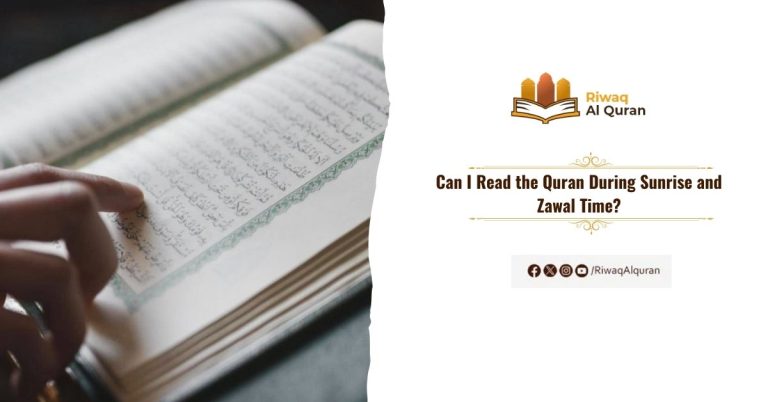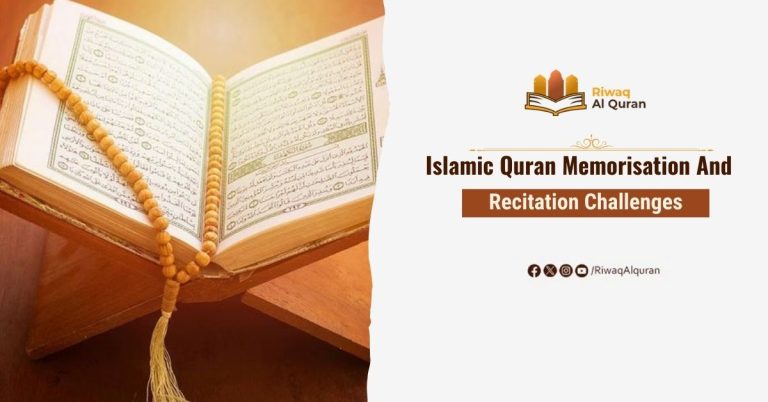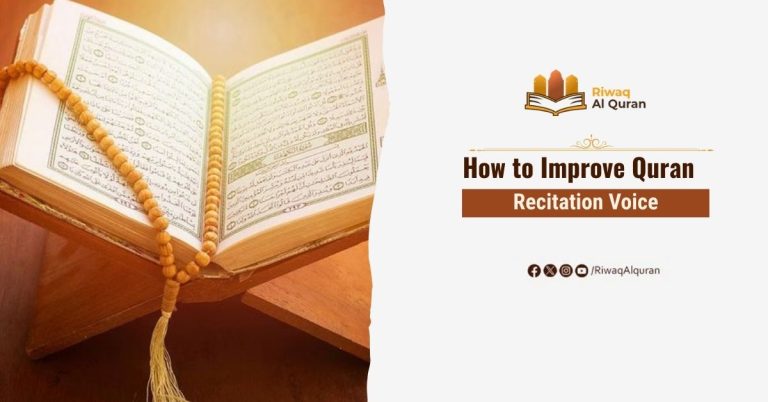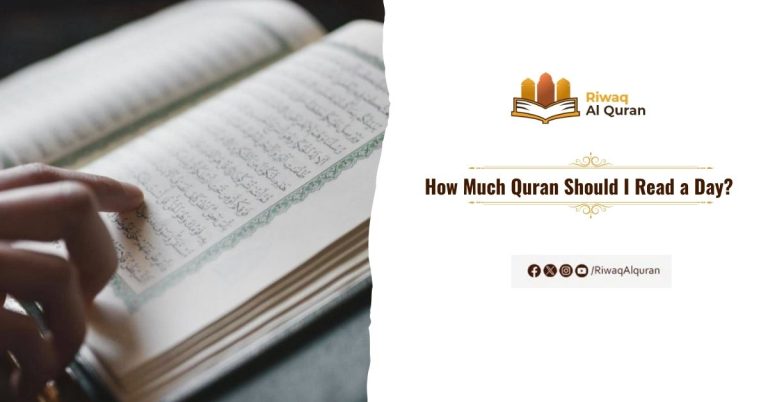Madd Munfasil is a very important topic in Tajweed [the art and science of reciting the Quran properly]. It is a sub-category of Madd, which is very important in Tarteel (proper recitation) of the Quran. Madd Munfasil enhances the rhythmic flow and beauty of Quranic verses while preserving their precise pronunciation. That’s why every Muslim should learn this topic.
In this article, we will examine the definition and rules of Madd Munfasil. Then, we will tackle types of Madd Munfasil with some examples from the Quran. After that, we will explore how long Madd Munfasil is [how many Harakat]. Then, we shall see some differences between Madd Munfasil and Madd Muttasil. Finally, we will give some guides on how to learn Madd Munfasil.
Table of Contents
What Is Madd Munfasil?
Madd Munfasil (Separated Madd) is one of the elongation rules in Tajweed, which occurs when a Madd letter [Alif (ا), Waw (و), and Yaa (ي)] appears at the end of a word and is followed by a hamzah (ء) at the beginning of the next word.
As the name implies, Madd Munfasil means “separated Madd” because the Madd letter and the hamzah are in two different words. For example, in the verse: “وَفِىٓ أَنفُسِكُمْ ۚ أَفَلَا تُبْصِرُونَ” (the Quran, 51:21), the last letter of “في” [Yaa (ي)] is a Madd letter and the first letter of the following word (أنفسكم) is a hamzah (ء). So this is called Madd Munfasil, which can be given 2, 4, or 5 harakat of Madd.
Rules Of Madd Munfasil
Certain rules govern how to make Madd Munfasil when it appears across two consecutive words. Below are some of these rules:
Madd Munfasil Is Jaiz (Non-Obligatory):
First thing to learn about Madd Munfasil is that it is non-obligatory. This means you are free to give it 2, 4 or 5 harakat. If you recite, following Hadr [Arabic: الحدر] (quick recitation of the Quran while keeping the essential Tajweed rules), you can give Madd Munfasil only 2 Harakat throughout your recitation session.
Madd Silah Kobra As A Subtype Of Madd Munfasil:
Madd Silah Kobra (مد الصلة الكبرى) is a secondary elongation rule that is considered a subtype of Madd Munfasil. It applies to the ha’ pronoun (هـ) when it appears as a connecting pronoun (ضمير) between two words, provided that these two words are Mutahrik (متحرك) [with a Fatha (َ), Kasra (ِ), or Damma (ُ)] and the ha’ pronoun (هـ) itself is Mutahrik [with Kasra (ِ) or Damma (ُ)], and is followed by a hamzah (ء).
For example, in this part of verse: “فَتَمَّ مِيقَـٰتُ رَبِّهِۦٓ أَرْبَعِينَ لَيْلَةًۭ” (the Quran, 7:142), a ha’ pronoun (هـ) is followed by a hamzah (ء), so it is given a long Yaa sound (ي) [its symbol in the Quran is ۦٓ]. As for the ha’ pronoun with Damma (ُ), in the part of verse: “وَهَبْنَا لَهُۥٓ إِسْحَـٰقَ وَيَعْقُوبَ” (the Quran, 19:49), as an example, the ha’ pronoun (هـ) is given a long Wow sound (و) [its symbol in the Quran is ۥٓ].
Consistency Is Key:
As it is non-obligatory, Madd Munfasil can be given 2, 4 or 5 harakat of elongation, as the reciter chooses. However, their mode of recitation must be consistent. This means that if you choose to make Madd Munfasil for 4 Harakat, you have to be consistent with all Madd length throughout your recitation session.

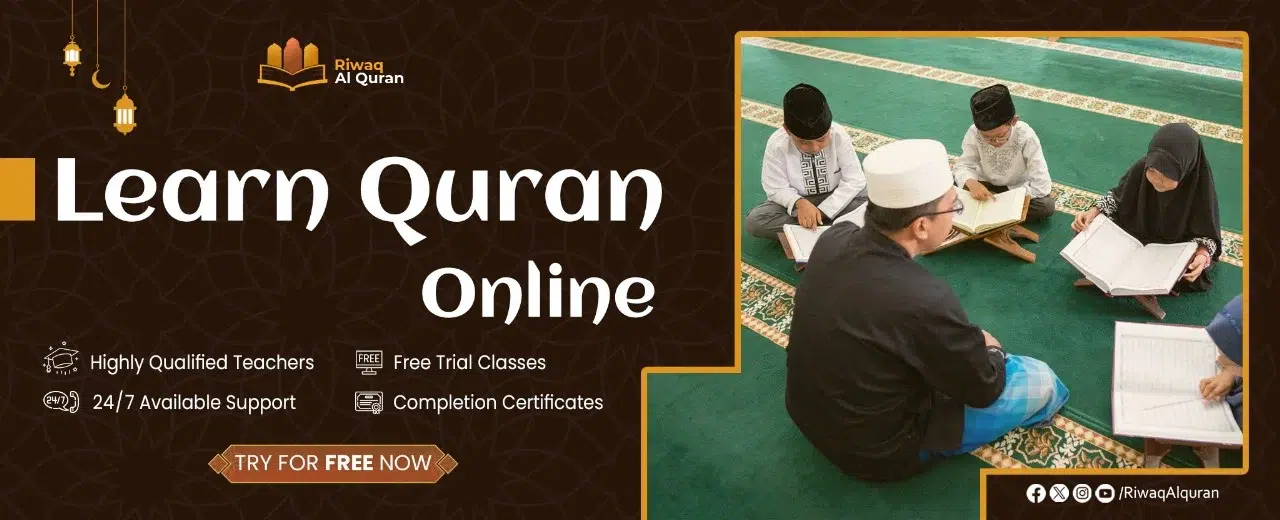
Types Of Madd Munfasil
There are two main types of Madd Munfasil: Madd Haqiqi and Madd Hokmi. Let’s see below the main differences between the two with some examples from the Quran.
1- Madd Munfasil Haqiqi (مد منفصل حقيقي):
Madd Munfasil Haqiqi [or “True Separated Madd”] represents one of the most important and frequently occurring elongation rules in the Quranic recitation. This rule is implemented when a Madd letter (ا، و، ي) at the end of a word is followed by a hamzah (ء) at the beginning of the next word.
It is called Haqiqi [true] because it is both uttered and written in the Quranic text (the Madd letter is there in the text, above which there is a little wave [~] sign). Also, a reciter can stop at the Madd letter and then start over with the following word that starts with a hamzah (ء), as they are in two different words.
An example of Madd Munfasil Haqiqi in the Quran is “يَـٰٓأَيُّهَا ٱلَّذِينَ ءَامَنُوا۟ قُوٓا۟ أَنفُسَكُمْ وَأَهْلِيكُمْ نَارًۭا” (the Quran, 66:6). The Madd letter in “قُوٓا۟” is و, and it is written in the text with a little wave [~] sign over it. Also, the following word “أَنفُسَكُمْ” starts with a hamzah (ء).
2- Madd Munfasil Hokmi (مد منفصل حكمي):
Unlike Madd Munfasil Haqiqi, Madd Munfasil Hokmi [ or “Discretionary Separated Madd”] occurs when the Madd letter is NOT written in the text, and a reciter cannot stop at the Madd letter and then start over with the following part of the word that begins with a hamzah (ء). So the Madd sign (little wave [~]) is seen in the word. However, the Madd letter is not there in the text.
An example of Madd Munfasil Hokmi in the Quran is “قَالَ إِنَّ هَـٰٓؤُلَآءِ ضَيْفِى فَلَا تَفْضَحُونِ” (the Quran, 15:68). The First Madd in “هَـٰٓؤُلَآءِ” is Madd Munfasil Hokmi, because the Madd letter [which should be Alif (ا) here] is NOT written in the text, but is uttered by the reciter. Also, the reciter cannot say “ها” and stop, then say “أولاء”.
Examples Of Madd Munfasil
There are so many examples of Madd Munfasil found in the Quran. Below are some examples of Madd Munfasil in the Quran.
1- An example of Madd Munfasil Haqiqi with the Madd letter Wow (و):
“وَلَا تَلْمِزُوٓا۟ أَنفُسَكُمْ”
2- An example of Madd Munfasil Haqiqi with the Madd letter Alif (ا):
“إِنَّآ أَنزَلْنَـٰهُ قُرْءَٰنًا عَرَبِيًّۭا لَّعَلَّكُمْ”
3- Examples of Madd Munfasil Haqiqi with the Madd letter Yaa (ي):
“يَـٰبَنِىٓ إِسْرَٰٓءِيلَ ٱذْكُرُوا۟ نِعْمَتِىَ ٱلَّتِىٓ أَنْعَمْتُ عَلَيْكُمْ”
In this part of verse, there are 2 examples of Madd Munfasil Haqiqi with the Yaa: “يَـٰبَنِىٓ إِسْرَٰٓءِيلَ” and “ٱلَّتِىٓ أَنْعَمْتُ”.
4- An example of Madd Munfasil Hokmi with the Madd letter Alif (ا):
“فَمَن ثَقُلَتْ مَوَٰزِينُهُۥ فَأُو۟لَـٰٓئِكَ هُمُ ٱلْمُفْلِحُونَ”
5- An example of Madd Silah Kobra with the Madd letter Wow (و):
“وَلَا يُوثِقُ وَثَاقَهُۥٓ أَحَدٌۭ”
6- Examples of Madd Silah Kobra with the Madd letter Yaa (ي):
“فَأَرْسِلْهُ مَعِىَ رِدْءًۭا يُصَدِّقُنِىٓ ۖ إِنِّىٓ أَخَافُ أَن يُكَذِّبُونِ”
In this part of verse, there are 2 examples of Madd Silah Kobra with the Yaa: “يُصَدِّقُنِىٓ” and “إِنِّىٓ”.
How Long Is Madd Munfasil?
Now, let’s get to the important question: How long to stretch the Madd sound? As it is a non-obligatory Madd, a reciter can choose one of the following options:
1- Most common elongation: 4 or 5 harakat
2- Least permissible elongation: 2 harakat
However, consistency is very important; a reciter cannot make 2 harakat for some of Madd Munfasil cases and 4 for some other cases of it in the same recitation session.
Difference Between Madd Munfasil And Madd Muttasil
There are some basic differences between Madd Munfasil and Madd Muttasil (Connected Madd). Please see the most important differences in the following table.
| Madd Munfasil | Madd Muttasil | |
| Where does it happen? | In two words:A Madd letter (ا, و, ي) appears at the end of a word and is followed by a hamzah (ء) at the beginning of the next word. | In one word:A Madd letter (ا, و, ي) is followed by a hamzah (ء) in the same word. |
| Is it mandatory or optional? | Optional | Mandatory |
| Examples | “يَـٰٓأَبَتِ ٱسْتَـْٔجِرْهُ”(The Quran, 28:26)“يَـٰمُوسَىٰٓ إِنِّىٓ أَنَا ٱللَّهُ”(The Quran, 28:30) | “وَلَقَدْ جَعَلْنَا فِى ٱلسَّمَآءِ بُرُوجًۭا”(The Quran, 15:16)“عَلَيْهَا مَلَـٰٓئِكَةٌ غِلَاظٌۭ شِدَادٌۭ”(The Quran, 66:6) |
| How many Harakat | 2, 4, or 5 harakat | 4, 5 or 6 harakat |
| When is it implemented? | If a reciter joins both words, then Madd Munfasil should be implemented. If they stop after the first word that ends with a Madd letter, then normal Madd is given [2 harakat]. | In all cases, as the Madd letter and the hamzah are in one word, the reciter can only read it as a one word with mandatory Madd for 4, 5 or 6 harakat. |
How to learn Madd Munfasil?
To learn Madd Munfasil, it is advisable to do some or all of the following steps.
1- First, study Madd as a general topic in Tajweed. Then, you can learn about Madd Munfasil as a sub-topic of Madd.
2- Recognize the types of Madd Munfasil (explained above in this article) with examples.
3- Learn the rules of Madd Munfasil. You can also enroll in one of the online Tajweed classes at Riwaq Al Quran to learn about Tajweed rules in general and Madd Munfasil rules in particular.
4- Practice with examples (for example, you can stop [make Waqf] at the end of the first word that ends with a Madd letter and then recite joining both words with Madd and hamza [with no Waqf], so as to learn how to pronounce the letters with Madd Munfasil correctly in each case, applying it with 2, 4 or 5 Harakat.
5- Listen to qualified reciters [advisable reciters are Shaikh Al Hossary and Shaikh Al Minshawy]. Pay special attention to how they apply Madd Munfasil in different contexts. For more benefit, you can look at the words from the Quran when listening to the recitation.
6- Record yourself practicing what you have learned, so that you may spot and correct your weaknesses.
7- Spot areas for improvement. You can, for example, identify challenging Madd Munfasil cases where you struggle, and make sure you do not make it shorter or longer than required. Then, dedicate some time to addressing and fixing those areas of weakness.
8- Receive feedback from qualified Quran mentors. You need to first listen to an experienced Quran teacher, make note of how they make correct Madd Munfasil, and then repeat after them. If you commit any mistakes, they can correct you. That’s how accurate lengths of Madd are perfected in Tajweed.
At Riwaq Al Quran, you can find many highly qualified Quran teachers/mentors who can help you and give you the guidance and correction you need. You can check them here.
Read Also: Comparison between Madd Mutasil and Madd Munfasil With Examples


Learn Quran, Arabic And Islamic Studies Online With The Best Native Tutors
Riwaq Al Quran is a comprehensive online platform that offers personalized Quran, Arabic and Islamic Studies Online classes for individuals of all ages and backgrounds.
Their experienced instructors use a structured curriculum to cover Tajweed, Tafsir, and Memorization, providing easy and effective access to learning the Quran.
The advanced online classes allow for seamless communication and interaction between students and teachers. Join Riwaq Al Quran for a deeper connection with the Quran.
We offer several courses such as:
- Online courses for kids.
- Online Quran classes for kids and adults.
- Online Arabic courses
- Online Ijazah courses
- Online Islamic Studies courses.
Here are a sample of our set of Quran Courses that will be helpful for you:
- Online Tafseer Course: Delve into Quranic meanings with our insightful online Tafseer course.
- Noorani Qaida Online: Learn Quranic basics efficiently through our Noorani Qaida online program.
- Online Quran Recitation Course: Enhance Quranic recitation skills through our expert-led online course.
- Online Tajweed Classes: Master Tajweed rules for beautiful Quranic recitation in online classes.
- Quran Memorization Online Course: Memorize the Quran effectively with our specialized online memorization course.
- Online Qirat Course: Explore diverse Qirat styles with our comprehensive online Qirat course.
- Online Quran Classes for Kids: Nurture a love for the Quran in kids through interactive online classes.
Conclusion
To sum up, Madd Munfasil represents an important concept of Arabic phonology. It has a significant influence on the pronunciation and rhythm of the Quran recitation. So it is very important to study Madd Munfasil and be familiar with its rules. Mastering this skill is deeply rewarding, but remember—progress takes time. Be patient with yourself, and embrace the journey of perfecting your recitation step by step – this is where the beauty unfolds.



























